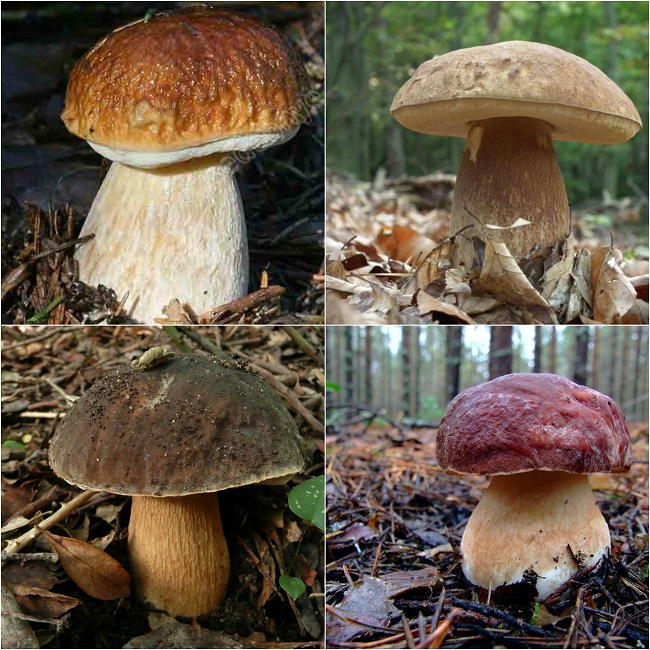The gall fungus belongs to the pineapple family. It is not an edible mushroom. You can eat it, but before that, it must undergo thermal procedures to get rid of the poison. It tastes bitter, hence its second name "gorchak". If you cook edible mushrooms with a gall mushroom, then it will transfer its bitterness to a normal mushroom, which will spoil the taste of the dish.
Characteristic
Outwardly, bitterness is similar to a porcini mushroom and a birch tree. Popularly, because of its similarity to the porcini mushroom, it is called "false porcini mushroom". But there are features that distinguish it from other fruits:
- Pink color at the tubular layer;
- Brown shade of the mesh on the leg of the bitter pot;
- In the context, the mushroom has a pinkish flesh.
The cap of the inedible fruit can be of different sizes, from four to fifteen centimeters. Young fruits are hat-shaped closer to spherical, and already mature mushrooms, it rounds out and grows. The color of the cap itself can also vary, from yellow-brown to brown-light color. The most common color is white, like a porcini mushroom.
Gorchak has a pulp of a fibrous structure, it has almost no smell or aroma that all mushrooms have. The leg of the mustard plaster is in the shape of a cylinder with a slight decrease at the base. The size of the leg can also be different, in the aisles from three to thirteen centimeters, and its diameter is not large, about three centimeters. Over time, the leg of the bitter pot begins to hide with a mesh, a dense structure with white or gray fibers. Inedible bitterness has round pores, in some cases they can acquire an angular shape.
The most important difference between bitterness is that a dark shade begins to appear at the site of the break, and also the fact that insects such as worms are very rarely found in this type of mushroom.
Most often, bittersweet can be found in coniferous areas. It grows in sandy soil. They grow both on some soil and on any stumps. He can live both himself and in groups. The period of emergence of the inedible bitterness is approximately in July and lasts until September. The activity of the emergence of a new crop depends on weather conditions. They grow most actively during the warm period. But a very large accumulation of them in one place can rarely be seen. The most favorable period for the appearance of bitterness is the moment when after the rains it is warm.
Signs for which you can distinguish mustard from edible
Gorchak is a fairly common species in a temperate continental climate. Therefore, it is not difficult to confuse it among other species. In order to avoid getting the inedible fruit into the basket, it is recommended to know its features. The main differences between bitterness are as follows:
- The most obvious characteristic of bitterness, which immediately gives it away, is its taste. It is unusually bitter. You can check the found fruit in the following way: you just need to lick it. If a bitter aftertaste is immediately felt on the tongue, then it is bitter, since neither white birchwood has a bitter aftertaste. But here, too, not everything is so simple, the situation was noticed that some people who licked bitter gourd, the taste seems not bitter, but, on the contrary, sweet.
- After the gall fungus is cut open, its pulp immediately turns pinkish-brown. No other fruit that can be confused with bitterness darkens after cutting, but the exception is the pinkish porcini mushroom, which, when cut, begins to turn pink at the edges.
- The bitterness leg has a brown mesh-like coating. The leg of the edible fruit does not have this coating. The birch bark is covered with white or dark scales, which is associated with the trunk of a birch. Such a type of these fruits, like boletus, also has a net on the leg, but it differs in its shape and density.
The consequences of eating a false porcini mushroom
Gorchak refers to fruits that are not recommended to be eaten, but there is no poison in its composition. Since even worms and other insects avoid this fruit, it is clear that it is not recommended for humans either. Its pulp contains toxic substances that contribute to the bitter taste. Since heat treatment increases the bitterness of bitterness, it is very difficult for a person to eat a large amount of false porcini mushroom at one time. It is for this reason that gall fungus poisoning is a very rare occurrence. The most common cases of food poisoning occur when a mushroom has been confused with similar mushrooms and is preserved. When canning these fruits, vinegar and a variety of spices are used, and this hides the bitterness of the false porcini mushroom, which increases the risk of poisoning. Some scientists argue that even with direct contact with it, you can get toxic effects. If the toxic substances of bitterness got into the human body, then they first of all begin to destroy its liver. The first symptoms that signal poisoning do not begin to appear immediately, but can only make themselves felt after a week or even a month. The main symptoms of poisoning include the following:
- Dizziness and weakness in the body. They appear on the first day after the consumption of bitterness. This symptom does not last long;
- If an inedible fruit gets inside a person, there may be some problems in the bile separation. In this regard, it was called the bile mushroom;
- After a week or a month, the toxic substances that make up the inedible fruit begin to act on the liver, destroying it. If a person has eaten a large enough amount of inedible fruits, then he may develop cirrhosis of the liver.
Medicinal features of the gall fungus
Oddly enough, but this completely inedible mushroom has medicinal properties. Some substances were extracted from it, which are actively used in medicine. One such component is tilopilan. It is a substance that stimulates the immune system in humans. This substance improves the concentration of phagocytosis, which is a process that makes it possible for some substances to find and fight foreign microorganisms in the body. In the nineteenth century, the inedible bitterness was tested, and scientists have shown that it can fight cancer cells. In addition to these advantages, it contains a component that is able to outgrow bacterial cells.
An interesting fact is that in ancient times, gorchak was used as a ritual dish. This phenomenon was symbolic, as his beanie hats had a very bitter taste. They were a symbol of the bitterness of the loss of a loved one. At the same time, it was used in medicine as a choleretic agent.










